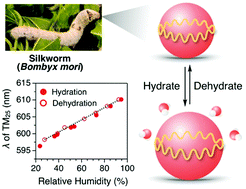The Mac
@TheMac
06 August, 08:05
Notice: Undefined index: tg1tga_access in /home/admin/www/anonup.com/themes/default/apps/timeline/post.phtml on line 396
SusieQ Freedom
@Luckysusi
06 August, 08:10
In response The Mac to his Publication
Much happier hydrated! 💦🐛..
Notice: Undefined index: tg1tga_access in /home/admin/www/anonup.com/themes/default/apps/timeline/post.phtml on line 396
The Mac
@TheMac
06 August, 08:17
In response SusieQ Freedom to her Publication
Nobles and kings of foreign lands desired silk and would pay high prices for the
cloth.
The emperors of China wanted to keep the process for making silk a secret.
Anyone caught telling the secret or taking silkworms out of China was put to death.
The Chinese managed to keep silk a secret for over 1000 years.
cloth.
The emperors of China wanted to keep the process for making silk a secret.
Anyone caught telling the secret or taking silkworms out of China was put to death.
The Chinese managed to keep silk a secret for over 1000 years.
Notice: Undefined index: tg1tga_access in /home/admin/www/anonup.com/themes/default/apps/timeline/post.phtml on line 396
The Mac
@TheMac
06 August, 08:19
In response The Mac to his Publication
The necessity for optical interfaces in biomedical applications is driving increasing demand for the development of biocompatible photonic components. Biophotonic components are essential for applications including sensors,[1,2] imaging,[3–6] bio-micro- electromechanical systems (MEMS) devices,[7] and therapeu- tics.[8] Silk fibroin in film form has been recently identified as a suitable biopolymer for the development of optical devices.[9,10] Biocompatible silk fibroin has promise as an optical biomaterial based on a number of important physical properties.[11] In particular, silks are the strongest and toughest natural fibers known, and regenerated silk fibroin from the Bombyx mori silkworm are easily formed into a variety of material formats such as hydrogels,[12] ultrathin and thick films,[13,14] controlled-release coatings,[15] 3D porous matrices,[16] and fibers with controllable diameters.[17]
Notice: Undefined index: tg1tga_access in /home/admin/www/anonup.com/themes/default/apps/timeline/post.phtml on line 396
The Mac
@TheMac
06 August, 08:20
In response The Mac to his Publication
In addition to these structures, which are primarily for biomedical applications, silk fibroin has also been used to fabricate biocompatible and biodegradable microfluidic devices that can be used as biosensors or other BioMEMS devices.
Notice: Undefined index: tg1tga_access in /home/admin/www/anonup.com/themes/default/apps/timeline/post.phtml on line 396
The Mac
@TheMac
06 August, 08:21
In response The Mac to his Publication
Bio-MEMS is an abbreviation for biomedical (or biological) microelectromechanical systems. Bio-MEMS have considerable overlap, and is sometimes considered synonymous, with lab-on-a-chip (LOC) and micro total analysis systems (μTAS). Bio-MEMS is typically more focused on mechanical parts and microfabrication technologies made suitable for biological applications. On the other hand, lab-on-a-chip is concerned with miniaturization and integration of laboratory processes and experiments into single (often microfluidic) chips. In this definition, lab-on-a-chip devices do not strictly have biological applications, although most do or are amenable to be adapted for biological purposes. Similarly, micro total analysis systems may not have biological applications in mind, and are usually dedicated to chemical analysis.
Notice: Undefined index: tg1tga_access in /home/admin/www/anonup.com/themes/default/apps/timeline/post.phtml on line 396
The Mac
@TheMac
06 August, 08:22
In response The Mac to his Publication
A broad definition for bio-MEMS can be used to refer to the science and technology of operating at the microscale for biological and biomedical applications, which may or may not include any electronic or mechanical functions.[2] The interdisciplinary nature of bio-MEMS combines material sciences, clinical sciences, medicine, surgery, electrical engineering, mechanical engineering, optical engineering, chemical engineering, and biomedical engineering.[2] Some of its major applications include genomics, proteomics, molecular diagnostics, point-of-care diagnostics, tissue engineering, single cell analysis and implantable microdevices.[2]
Notice: Undefined index: tg1tga_access in /home/admin/www/anonup.com/themes/default/apps/timeline/post.phtml on line 396
The Mac
@TheMac
06 August, 08:24
In response The Mac to his Publication
These objects include stents, pacemakers, insulin pumps, prostheses, cochlear implants, drug delivery pumps, spinal cord stimulation, and deep brain stimulation to name but a few.
Notice: Undefined index: tg1tga_access in /home/admin/www/anonup.com/themes/default/apps/timeline/post.phtml on line 396
08:25 AM - Aug 06, 2022
In response The Mac to his Publication
Only people mentioned by TheMac in this post can reply
The Mac
@TheMac
06 August, 08:27
In response The Mac to his Publication
The complexity of the central nervous system (CNS), its limited self-repairing capacity and the ineffective delivery of most CNS drugs to the brain contribute to the irreversible and progressive nature of many neurological diseases and also the severity of the outcome. Therefore, neurological disorders belong to the group of pathologies with the greatest need of new technologies for diagnostics and therapeutics. In this scenario, nanotechnology has emerged with innovative and promising biomaterials and tools. This review focuses on ischemic stroke, being one of the major causes of death and serious long-term disabilities worldwide, and the recent advances in the study of liposomes and carbon nanomaterials for therapeutic and diagnostic purposes. Ischemic stroke occurs when blood flow to the brain is insufficient to meet metabolic demand, leading to a cascade of physiopathological events in the CNS including local blood brain barrier (BBB) disruption.
Notice: Undefined index: tg1tga_access in /home/admin/www/anonup.com/themes/default/apps/timeline/post.phtml on line 396
The Mac
@TheMac
06 August, 08:28
In response The Mac to his Publication
However, to date, the only treatment approved by the FDA for this pathology is based on the potentially toxic tissue plasminogen activator. The techniques currently available for diagnosis of stroke also lack sensitivity. Liposomes and carbon nanomaterials were selected for comparison in this review, because of their very distinct characteristics and ranges of applications. Liposomes represent a biomimetic system, with composition, structural organization and properties very similar to biological membranes. On the other hand, carbon nanomaterials, which are not naturally encountered in the human body, exhibit new modes of interaction with biological molecules and systems, resulting in unique pharmacological properties. In the last years, several neuroprotective agents have been evaluated under the encapsulated form in liposomes, in experimental models of stroke.
Notice: Undefined index: tg1tga_access in /home/admin/www/anonup.com/themes/default/apps/timeline/post.phtml on line 396

